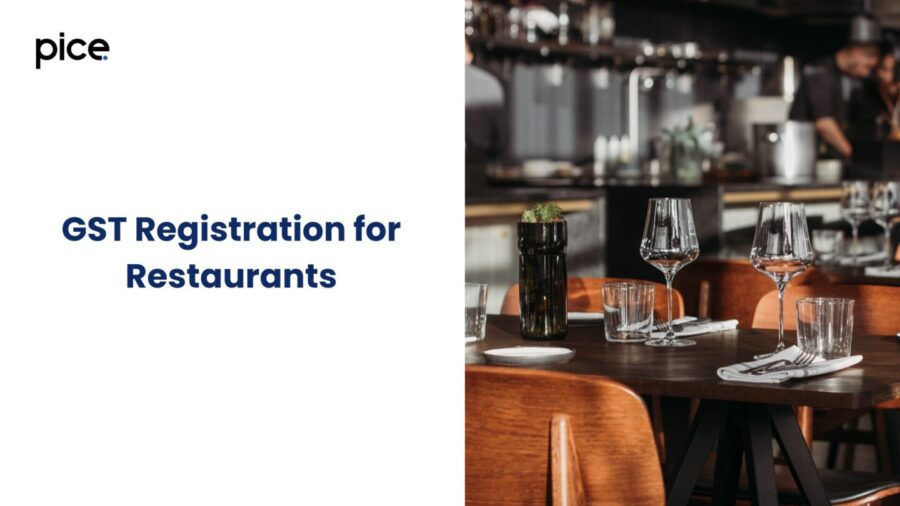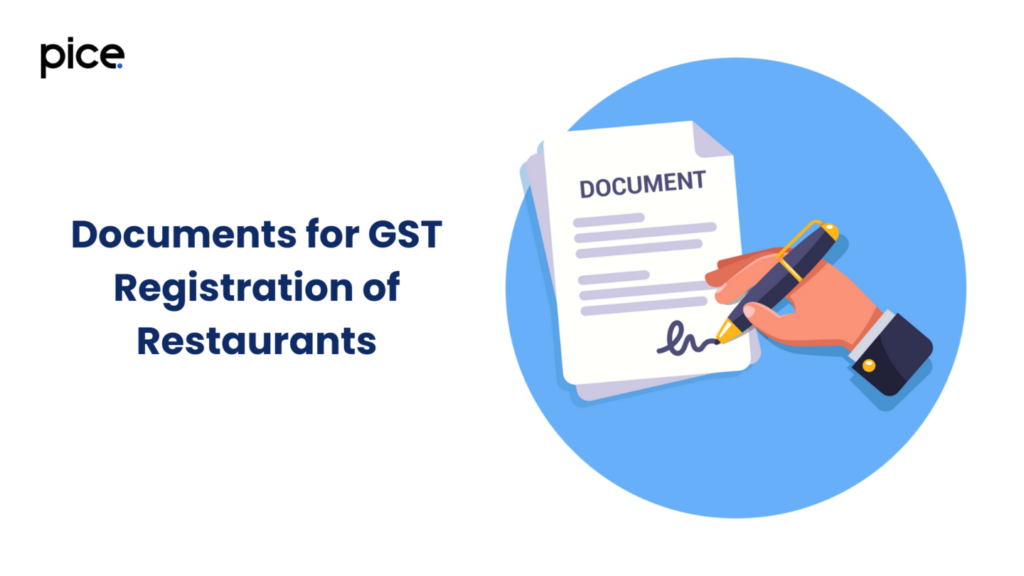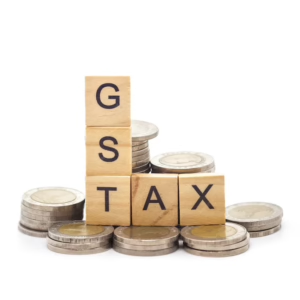GST Registration for Restaurants
- 27 Aug 24
- 12 mins

GST Registration for Restaurants
Key Takeaways
- GST simplifies the tax structure for restaurants by replacing multiple indirect taxes with a unified tax regime.
- Restaurants must meet specific eligibility criteria, including turnover thresholds, to register for GST.
- FSSAI registration is mandatory for all restaurants, ensuring compliance with food safety standards alongside GST.
- The GST rates for restaurants vary, with non-AC restaurants taxed at 5% and AC restaurants at 18%.
- Proper record maintenance and documentation are crucial for claiming input tax credit and complying with GST regulations.
The GST rules for businesses are meant to simplify the tax system and make it more fair and clear. Multiple secondary taxes, like VAT, Service Tax, and Luxury Tax, have been replaced by GST. This has made it easier for restaurant owners to follow the rules.
Under GST, restaurants are grouped by the services they offer. For example, there are restaurants with air conditioning, restaurants that are not part of hotels, and restaurants that are. The GST rates that apply are based on this group. Restaurants that aren't AC are taxed at 5%, but restaurants that are AC and serve booze are taxed at 18%. There is also an 18% GST rate for restaurants inside hotels with room rates of Rs. 7,500 or more.
Restaurant owners must make sure they follow GST rules by sending out GST-compliant invoices, keeping thorough records of taxable supplies, and sending in regular GST returns. The GST site makes this process easier by giving people a single place to register, file their returns, and pay their taxes.
💡If you want to pay your GST with Credit Card, then download Pice Business Payment App. Pice is the one stop app for all paying all your business expenses.
The composition plan under GST makes it easier for small restaurants that make up to Rs. 1.5 crore a year to follow the rules. To make things easier for businesses, this plan lets them pay a flat rate of 5% on their sales.
Restaurants also have to follow rules about the input tax credit (ITC). They can get ITC on the GST they paid for things like raw materials, capital goods, and other things their business needs. This makes the cash flow better and lowers the total tax burden.
Eligibility Requirements
Restaurants must meet certain standards in order to be eligible to sign up for GST. Firstly, restaurants that make more than the basic exemption level of Rs. 20 lakh (Rs. 10 lakh for special category states) must sign up for GST.
Restaurants that sell taxable goods, like food and drinks, need to sign up for GST. In this group are restaurants that are not part of a hotel, restaurants that are outside, and food services. If a restaurant provides exempt services, like bringing food to schools or hospitals, it may not need to be registered for GST, but it does need to keep records of these services.
Restaurants with less than the level can choose to register voluntarily, which lets them get the benefits of input tax credit and follow GST rules. People who register voluntarily must follow the same rules of compliance as people who register because they have to.
It also depends on what kind of food business you have. Certain GST rates and rules must be followed by restaurants that are separate from hotels, food services that are part of hotels, and restaurants that are part of hotels that offer rooms. The GST rate is based on the services provided, like whether they are air-conditioned or not, and whether or not alcohol is served.
To meet the requirements, restaurants must keep the right paperwork and records. This means keeping track of sales, sending out stock bills, and entering credit information. Keeping good records makes sure you follow the rules and makes it easier to register for GST and file your returns.
FSSAI Registration for Restaurants
All restaurants in India need to be registered with the Food Safety and Standards Authority of India (FSSAI). It makes sure that businesses follow rules about food safety and cleanliness so that customers can get safe, good food. To become registered with FSSAI, you need to send in a number of papers and follow the rules.
Restaurants need to give information like their business name, address, and the type of food business they are in order to get FSSAI registration. They also have to show proof that they own the restaurant, that they are registered as a business, and a thorough plan for managing food safety.
The restaurant must have the FSSAI registration certificate posted in a clear way. It shows that the business follows food safety rules, which builds trust and credibility with customers. Food safety rules are always being followed because the FSSAI does regular checks.
Restaurants must follow both tax and food safety rules, so FSSAI registration is tied to GST registration. Getting registered and following the rules is easy if you have the right paperwork and follow the rules.
Steps for GST Registration
There are several steps that restaurants need to take to get registered for GST. First, restaurant owners need to make a user ID and password on the GST site. Once they are logged in, they need to fill out the GST registration application form and send it in with all the necessary information and paperwork.
The application form needs details about the restaurant business, like its name, address, services, and how much money it makes each year. Restaurant owners must also give information about the person who is allowed to sign, their bank account, and the HSN codes for the goods and services they offer.
After completing the form, restaurant owners must upload scanned copies of certain papers, such as their PAN card, proof that their business is registered, and proof that they are who they say they are. Some other things that are needed are proof of address for the business, a bank account, and a digital signature.
Following the submission of the application, it is checked by the GST officials. The GST registration certificate is given out if all the information and paperwork are right. The GSTIN (Goods and Services Tax Identification Number) is on this certificate and must be used for all future GST-related activities.
As part of the registration process, you may also need to get an E-Way Bill for the moving of goods. This makes sure that the transport of goods follows GST rules and stays out of trouble.
Necessary Documents for GST Registration of Restaurants

GST registration requires several documents to verify the identity and business details of the restaurant owner. These documents ensure that the registration process is accurate and compliant with GST regulations.
Registration Proof
Proof of registration includes the PAN card of the restaurant business, which is mandatory for GST registration. Additionally, proof of business registration, such as the partnership deed or the Memorandum and Articles of Association (MOA), is required for partnership firms and companies. For sole proprietorships, the proprietor’s Aadhaar card and bank details are necessary.
Principal Place of Business Evidence
Evidence of the principal place of business includes address proof such as the lease agreement, ownership documents, or utility bills. This verifies the location of the restaurant and ensures that the business operates from a legitimate premises.
Bank Account Information
Bank account documents include a copy of the bank statement, canceled cheque, or a letter from the bank. These documents verify the bank account details of the restaurant, ensuring that the business transactions comply with GST regulations.
GST Rates Applicable to Restaurant Businesses
There are different GST rates for different types of services that restaurants offer. The tax rate for restaurants that aren't AC is only 5%. The tax rate for AC restaurants and restaurants that serve alcohol is 18%. An 18% GST rate is also applied to restaurants inside hotels with room rates of Rs. 7,500 or more.
The GST rates are meant to make sure that food services are taxed in a fair and consistent way. For example, outdoor catering services are charged at 18%, the same rate as AC restaurants. This makes sure that the tax system is fair for all types of food services.
The composition plan under GST makes it easier for small restaurants that make up to Rs. 1.5 crore a year to follow the rules. Restaurants pay a fixed rate of 5% on their sales under this plan. This makes their tax responsibilities easier to understand and makes it easier for them to follow the rules.
Auditing, Assessment, and Input Tax Credit (ITC) in Restaurants
As part of GST auditing and review, restaurant owners' GST returns are checked to make sure they are correct. The GST officials do audits to make sure that tax rules are being followed and to find any problems with the numbers that were reported.
The input tax credit (ITC) is a very important way for restaurant owners to lower their tax bills. ITC lets restaurants get a tax break for the GST they paid on things like raw materials, capital goods, and other things they need to run their business. This lowers the total amount of taxes that need to be paid and improves cash flow.
Restaurant owners must keep careful records of their purchases, input credits, and sales in order to receive ITC. Having the right paperwork makes sure that the ITC claims are correct and can be checked during checks. It is easier to get ITC through the GST site, which is a single place where tax credits and compliance can be managed.
Record Maintenance for Restaurants
Maintaining proper records is essential for GST compliance in the restaurant industry. Restaurant owners must keep detailed records of sales, purchases, input credits, and stock inventory. These records ensure that the business complies with GST regulations and facilitates smooth auditing and assessment processes.
Records must include sales invoices, purchase invoices, stock registers, and input tax credit details. Proper record-keeping helps in filing accurate GST returns, claiming ITC, and responding to any queries from GST authorities.
The GST portal provides tools and resources for managing records, ensuring that restaurant owners can maintain compliance with ease. Regular updates and audits ensure that the records are accurate and up-to-date, facilitating smooth business operations and compliance with tax regulations.
In conclusion, GST registration for restaurants involves understanding the regulations, meeting eligibility requirements, and following the proper registration process. By maintaining the necessary documents and adhering to compliance requirements, restaurant owners can ensure smooth operations and take advantage of the benefits offered by the GST regime.
FAQs
How to register GST for a restaurant?
1. Visit the GST portal (gst.gov.in) and create a user ID and password.
2. Fill out the GST registration application form (Form GST REG-01) with necessary details like business name, address, type of services, and annual turnover.
3. Upload the required documents such as PAN card, proof of business registration, identity proof, address proof, bank account details, and a digital signature.
4. Submit the application form for verification by GST authorities.
5. Once verified, you will receive a GSTIN (Goods and Services Tax Identification Number) and a GST registration certificate, which you need for all GST-related transactions.
Is GST applicable for small restaurants?
How do restaurants charge GST?
1. Non-AC restaurants: 5%
2. AC restaurants and those serving alcohol: 18%
3. Restaurants within hotels where the room tariff is Rs. 7,500 or more: 18% The GST amount is calculated on the total bill value and is itemized separately in the invoice provided to customers.
How do I claim GST on my restaurant bill?
How to save GST in restaurants?
2. Choose restaurants that do not serve alcohol to avoid the higher 18% GST rate.
3. Look for restaurants offering discounts or promotions that can offset the GST amount.
If you are a business entity, ensure you claim the input tax credit on your restaurant expenses.
How much GST on food?
1. Non-AC restaurants: 5%
2. AC restaurants and those serving alcohol: 18%
3. Restaurants within hotels where the room tariff is Rs. 7,500 or more: 18% The GST amount is calculated on the total bill value and is itemized separately in the invoice provided to customers.
 By
By 
















